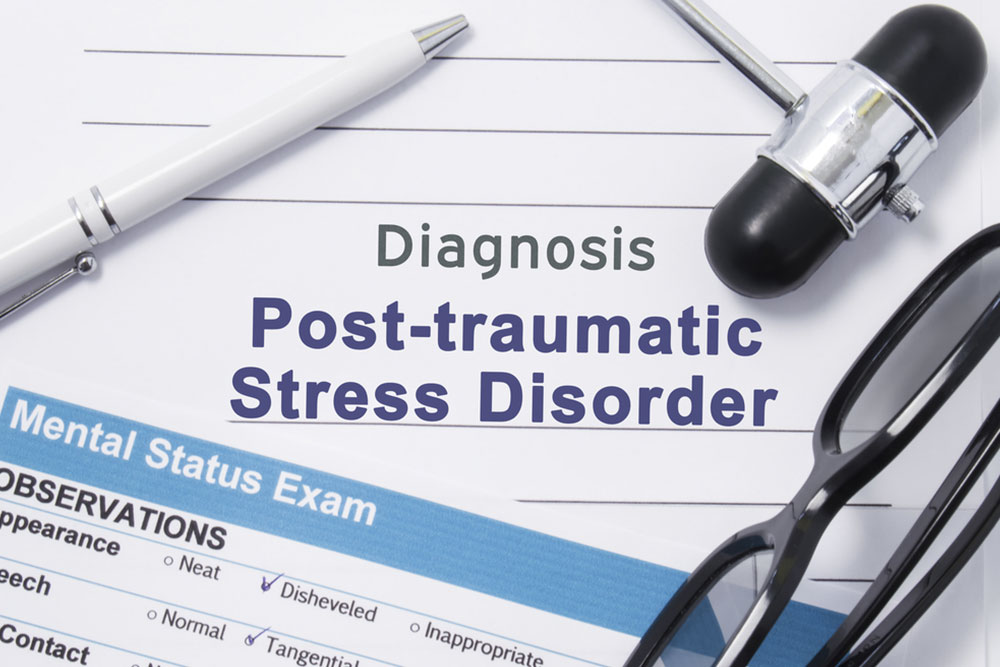Comprehensive Guide to PTSD Screening and Accurate Diagnosis
This comprehensive guide explores PTSD, emphasizing the importance of early screening and precise diagnosis. It discusses effective tools like the Davidson Trauma Scale and SPRINT, differentiates between PTSD types, and highlights clinical methods for diagnosis. Early intervention is crucial for successful treatment, preventing chronic mental health issues. The article provides essential insights into professional diagnostic processes, helping individuals and clinicians manage trauma-related conditions better to promote mental well-being and recovery.

Post-Traumatic Stress Disorder (PTSD) is a complex psychological condition that develops after exposure to traumatic events such as serious accidents, violent assaults, or natural disasters. It can profoundly impact an individual's mental health, daily functioning, and overall quality of life. Understanding PTSD symptoms, the importance of early screening, and the methods used for accurate diagnosis are essential steps toward effective treatment and recovery. With millions affected worldwide, gaining knowledge about PTSD ensures that sufferers receive timely support, helping prevent the condition from becoming chronic and debilitating.
Understanding PTSD and Its Underlying Causes
PTSD manifests differently across individuals, depending on the nature, severity, and duration of trauma experienced. For some, a single traumatic incident might trigger symptoms, while others may develop complex PTSD due to repeated or prolonged exposure to trauma, such as ongoing domestic violence or childhood abuse. The emotional and physiological responses to trauma include intrusive memories, emotional numbness, hypervigilance, and avoidance behaviors. The variation in trauma responses underscores the importance of personalized assessment approaches for accurate diagnosis.
Trauma's impact varies based on individual resilience, support systems, and the type of traumatic event. Recognizing the specific symptoms associated with PTSD is essential for timely intervention. Symptoms often include intrusive, distressing memories, nightmares, flashbacks, heightened startle responses, persistent avoidance of trauma reminders, emotional numbness, irritability, difficulty concentrating, and mood swings. These symptoms, if left untreated, can lead to chronic psychological distress, social withdrawal, and even physical health problems. Therefore, professional evaluation and diagnosis are vital for effective management.
Effective PTSD Screening Tools and Their Role
Several validated screening instruments are available to help identify PTSD symptoms early, either self-administered or through clinical interviews. These tools aim to quantify symptom severity, identify the presence of trauma-related responses, and evaluate their impact on daily life.
Davidson Trauma Scale (DTS): This comprehensive self-assessment consists of 17 items that help individuals evaluate their symptoms such as exaggerated startle response, emotional numbing, physiological reactions, and intrusive thoughts. Respondents rate the severity of each symptom on a scale, providing valuable insight into their overall psychological state.
Short PTSD Rating Interview (SPRINT): A brief, clinician-administered interview designed for early detection of PTSD. It assesses eight core symptoms—including avoidance behaviors, intrusive memories, and emotional detachment—using a five-point severity scale. SPRINT is particularly useful in emergency or primary care settings where quick screening is necessary.
These screening tools are essential for clinicians and mental health professionals to identify individuals at risk promptly, guiding further diagnostic evaluation and treatment planning.
Distinguishing Between Different Types of PTSD
While PTSD shares core symptoms such as nightmares, flashbacks, and hyperarousal, there are distinctions between types like standard PTSD and complex PTSD. Standard PTSD typically results from a single traumatic event, whereas complex PTSD arises from ongoing, repeated trauma, often beginning in childhood or continuing over extended periods.
Complex PTSD may present with additional symptoms such as emotional dysregulation, impulsivity, difficulties maintaining relationships, mood swings, and self-harm behaviors. It often involves disturbances in self-identity and feelings of shame or guilt. Diagnosis focuses on criteria outlined in the DSM-5, emphasizing re-experiencing, avoidance, persistent negative alterations in mood and cognition, and heightened reactivity.
Understanding these differences is critical for effective treatment, as interventions may vary based on PTSD subtype. While no biological tests currently exist for complex PTSD, diagnosis relies heavily on clinical interviews and symptom history to formulate an accurate diagnosis.
Current Methods and Tools for Diagnosing Complex PTSD
Diagnosis of complex PTSD primarily depends on thorough clinical evaluation, as there are no specific biological or laboratory tests available for this subtype. Mental health professionals utilize structured interviews and diagnostic criteria from the DSM-5 to assess emotional, cognitive, and behavioral symptoms.
In clinical practice, specialists evaluate the patient's history of trauma, symptom duration, and severity. Symptoms like emotional intrusion, avoidance, negative beliefs about oneself, difficulty regulating emotions, and persistent feelings of shame or guilt are key indicators used to diagnose complex PTSD. Early detection is essential to prevent symptom escalation and develop targeted therapeutic interventions.
Standardized Diagnostic Techniques Used by Professionals
Initial screening often begins with assessments by primary care physicians, who refer patients to mental health specialists for detailed evaluation. The main diagnostic tools utilized include:
Clinician-Administered PTSD Scale (CAPS-5): A highly comprehensive and structured interview consisting of 30 questions that help clinicians evaluate the presence and severity of PTSD symptoms. The CAPS-5 assesses symptom frequency, intensity, and impact on the individual's functioning, aiding in accurate diagnosis and treatment planning.
PTSD Symptom Scale Interview (PSS-I): This interview includes 17 items related to core PTSD symptoms—ranging from intrusion and avoidance to mood and arousal disturbances. It helps identify traumatic events linked to symptoms and measures their effect on daily life, facilitating a well-rounded understanding of the patient's condition.
Early and accurate diagnosis using these tools enables clinicians to develop individualized treatment plans, including psychotherapy and pharmacotherapy, to address both PTSD and complex PTSD symptoms effectively.
In summary, proactive screening, proper diagnosis, and early intervention are vital components in managing PTSD. Advances in assessment methods and a better understanding of different PTSD subtypes continue to improve outcomes for those affected by trauma-related disorders.




